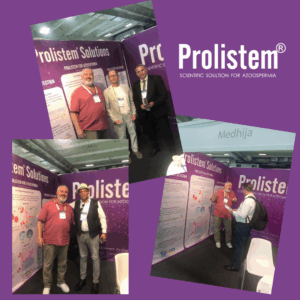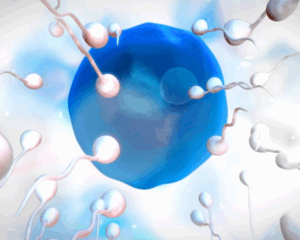
Prolistem for Non-Obstructive Azoospermia: A Comprehensive Guide
Prolistem for non obstructive azoospermia, Non-obstructive azoospermia (NOA)

Infertility affects millions of couples worldwide, and azoospermia—the complete absence of sperm in the ejaculate—is one of the most concerning diagnoses for men. While the condition may seem hopeless at first, advancements in azoospermia diagnosis & treatment offer real hope for those looking to start a family.
In this comprehensive guide, we’ll explore what azoospermia is, how it is diagnosed, and what treatment options are available, both natural and medical.
Azoospermia is a medical condition characterized by the total absence of sperm in a man’s semen. It affects about 1% of all men and 10-15% of infertile men. Without sperm in the ejaculate, natural conception becomes impossible. However, many cases are treatable or manageable with proper intervention.
There are two main types of azoospermia:
This occurs when sperm production is normal, but a blockage in the reproductive tract prevents sperm from being released.
This involves an issue with sperm production itself. The testes fail to produce adequate amounts of sperm, often due to hormonal imbalances, genetic factors, or testicular damage.
Interestingly, azoospermia rarely presents any symptoms other than infertility. Many men only discover the issue when trying to conceive.
Some possible signs that may accompany azoospermia include:
Low semen volume
Pain or swelling in the testicles
Reduced facial or body hair (hormonal imbalance)
Erectile dysfunction
Lack of ejaculation
Diagnosing azoospermia involves several laboratory and physical assessments. Proper diagnosis is essential to determine whether the condition is obstructive or non-obstructive.
The first step is a semen analysis, usually done on two separate occasions to confirm azoospermia. The sample is examined under a microscope for the presence of sperm.
Hormonal imbalances can interfere with sperm production. Doctors often test:
FSH (Follicle Stimulating Hormone)
LH (Luteinizing Hormone)
Testosterone
Prolactin
High FSH with low sperm counts may indicate testicular failure.
A urologist will check for signs of testicular abnormalities, swelling, varicoceles (enlarged veins), or absence of vas deferens.
In non-obstructive azoospermia, genetic causes like Klinefelter syndrome or Y chromosome microdeletions may be responsible. Genetic testing helps determine the root cause and possible transmission risks.
A biopsy may be performed to confirm sperm production in the testes. This is often a last resort diagnostic tool and may be combined with sperm retrieval.
Understanding the underlying cause is essential for selecting the right treatment. Common causes include:
Blocked vas deferens
Infections (like epididymitis)
Prior surgeries (vasectomy)
Congenital absence of vas deferens
Genetic defects
Hormonal imbalances
Radiation or chemotherapy
Varicocele
Testicular trauma or infections
The good news? Many forms of azoospermia are treatable. The treatment depends on the type of azoospermia and its root cause.
If a blockage is identified, microsurgery may restore the flow of sperm. Procedures include:
Vasovasostomy – reconnecting the vas deferens
Epididymovasostomy – bypassing blockages in the epididymis
If surgery is not possible, sperm can often be surgically extracted from the testicles or epididymis for use in IVF or ICSI.
Common methods include:
PESA (Percutaneous Epididymal Sperm Aspiration)
TESA (Testicular Sperm Aspiration)
TESE (Testicular Sperm Extraction)
Micro-TESE – highly effective for difficult cases
If low testosterone or high FSH is involved, medications like hCG, clomiphene citrate, or aromatase inhibitors may stimulate sperm production.
In some cases, even non-obstructive azoospermia patients produce small numbers of sperm. Micro-TESE is often successful in finding these sperm for ICSI.
Quit smoking and alcohol
Avoid heat (hot baths, tight underwear)
Improve diet with zinc, folate, and antioxidants
Manage stress
Whether azoospermia can be cured depends on the cause. Obstructive azoospermia is often fully treatable. Non-obstructive azoospermia may be managed or partially reversible through medications or assisted reproductive technologies.
In some cases, donor sperm may be the only option if no viable sperm are found.
Many azoospermic men can still father biological children through assisted reproductive technologies (ART):
A single sperm is injected directly into the egg. This is ideal for patients with very few retrieved sperm.
Combined with sperm retrieval methods, IVF helps fertilize eggs outside the body before implanting them into the uterus.
These methods offer high success rates for couples dealing with azoospermia.
Although not a cure, certain natural treatments may enhance sperm health, especially in borderline cases:
Ashwagandha
Maca Root
Tribulus Terrestris
Vitamin C & E
Zinc
CoQ10
Folate
L-Carnitine
⚠️ Always consult a doctor before taking supplements.
A diagnosis of azoospermia can be emotionally devastating. It’s essential to seek mental health support, join male fertility forums, or talk to a counselor.
Partners should communicate openly, as fertility challenges affect both individuals in a relationship.
Many men with azoospermia have gone on to become fathers—some through successful surgery, others through ICSI with retrieved sperm. Advances in medical technology and ongoing research continue to improve the success rate of azoospermia treatment.
Not always. Obstructive azoospermia is often reversible, while non-obstructive cases may respond to treatment depending on the cause.
Natural remedies may improve overall sperm health but are unlikely to cure complete azoospermia without medical intervention.
Costs vary widely based on the treatment type. Surgery or IVF with ICSI can cost between $5,000 to $20,000+ in many countries.
Yes. Many men achieve fatherhood through surgical sperm retrieval and IVF/ICSI.
Receiving an azoospermia diagnosis can be overwhelming, but it’s not the end of your journey. With proper azoospermia diagnosis & treatment, many men can still become biological fathers. Early testing, personalized treatment plans, and emotional support are key to overcoming the challenges of male infertility.
If you or your partner is struggling with fertility, consult a specialist for a comprehensive evaluation. Science and medicine are advancing every year—what may seem impossible today could become reality tomorrow.
Download the Guideline: https://www.cua.org/system/files/Guideline-Files/Evaluation%20and%20management%20of%20azoospermia.pdf

Prolistem for non obstructive azoospermia, Non-obstructive azoospermia (NOA)

Introduction Male infertility, especially caused by azoospermia, affects

We are proud to have participated in the

Introduction: A New Hope in Male Infertility Treatment
Prolistem®, a patented male fertility formula for azoospermia and zero sperm count, has not been evaluated by the Food and Drug Administration. This product, designed to support sperm production restoration and male infertility treatment, is not intended to diagnose, treat, cure, or prevent any disease.
PROLISTEM® is a Patented Formula
Copyright © 2025 Prolistem®